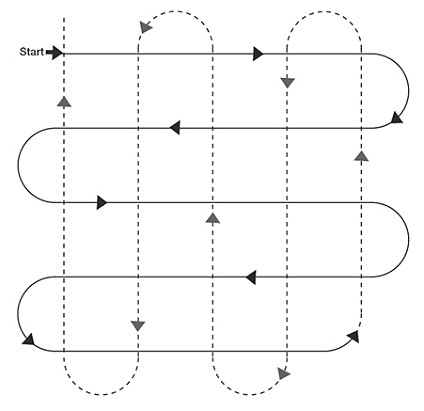
How -To Safely Polish Your Car to Perfection
HAND OR MACHINE POLISHING
We are often asked if polishing paint is better done by hand or machine and the answer is always by machine. The reason is simple, you just can't get the results by hand that you can achieve by machine. Your hand is not capable of doing the work a machine can do when it comes to paint polishing or even maintaining your finish. It is humanly impossible to oscillate your hand evenly over the entire surface of your car at a rate of 2,500-6,800 times per minute.
IS MACHINE POLISHING SAFE?
Absolutely, as long as you are using the correct type of car polisher. There are three basic types of car polishers so choose carefully.
- Rotary Buffer - The rotary buffer is a machine should only be used by the experienced professional for severe paint damage correction. The rotary buffer spins at a high rate of speed and in the hands of the inexperienced, it can do more harm than good and can even burn through your paint.
- Variable Speed, Random Orbit, Dual-Action Polisher - The variable 6 speed, random orbit, dual-action polisher with the correct pad and polish, is capable of removing random isolated scratches, swirl, oxidation, water spots, acid rain etching and bird dropping damage as well as other unfortunate paint defects that stand in the way of that brilliant shine. The variable speed, dual-action polisher like the Porter Cable Car Polisher is also a great maintenance tool for your gloss enhancement polishing, pre-wax cleaning and applying thin, even coats of your favorite car wax, paint sealant or protectant. This tool is effective and very safe!
- Wax Buffers - The common waxing machines that you can pick up at your local auto part stores for about $50 do little more that a jitter action on the paint. They usually come with a cloth bonnet and have little or noting to choose from as far as accessories. These machines can apply your wax but offer very little when it comes to real paint polishing or defect removal. Even if the box says random orbit" or variable speed", don't be fooled, they will do little more than jiggle on the surface and they do not have the power to effectively perfect and maintain your paint. With this machine, you get what you pay for.
The dual-action polisher like the Porter Cable Car Polisher is the preferred polisher for the professional detailer, serious car care enthusiast and even the beginner who has never even held a polisher in their hands. It is 100% safe for the do-it-yourselfer who wants an automotive polisher that is safe to use and provides amazing results.
BASIC CAR POLISHING TIPS AND TECHNIQUES
Don't worry, it's safe and easy! Even if you have never used any type of car polisher, you can successfully polish your car's paint and achieve that sought after, deep, wet looking shine!
There's a little bit of technique involved, but most people can pick it up it in about 5-10 minutes. The technique is to use overlapping motions and run the polisher over your paint at a nice and slow speed.

Proper machine polishing is as easy as following this simple pattern. Master this and you're on your way!
Recommended Speed Setting Guide:- STEP 1- Remove Serious Defects 5 to 5.5
- STEP 2- Remove Swirl and Minor Defects 4.5 to 5
- STEP 3- Pre Wax Cleaning and Gloss Enhancement 4.5
- STEP 4- Protect your paint finish from harsh environmental elements 2.5
- Product Residue Removal Sonus DAS Microfiber Buffing Bonnet - 3.5 to 4
Note: Not all paint finishes require the entire four-step process. Complete only the steps necessary for the condition or your paint finish.
Here are a few basic car polisher tips to keep in mind while you are learning to polish your car with a dual-action polisher.
- Do a test spot! Make sure your technique and process is offering desired results before proceeding to polish the entire car
- Use the proper pad, polish and speed combination for your paint's condition
- Keep the pad level on your paint surface at all times
- Always start with your least aggressive polish, then step up only if needed
- Use overlapping motions
- SLOW Down! Don't run the machine over the paint too fast or it won't get the job done
- Work a small (2' by 2') area at a time so you can concentrate on your work
- More polish is not better! Use only about 3 to 4 pea size dabs and add more as necessary
- Never dry buff! Add polish when you see your polish is thin and starts to go clear
- Never buff in direct sun or on a warm or hot surface
- Never use more than one type of polish on your polishing or buffing pad
- Keep your pads away from trim and sharp edges
- Tape off trim with painter's tape to avoid staining trim and polish build up in cracks and crevices
- Never lift your pad off the paint when the machine is turned on
- Keep the cord over your shoulder and away from your paint
- Tie a loose knot around where the extension cord meets the polisher cord so it stays plugged in
- Make sure your lighting is good so you can see your progress
- Apply medium pressure only when removing defects
- Check your work often to make sure your process is working
There are no products listed under this category.
